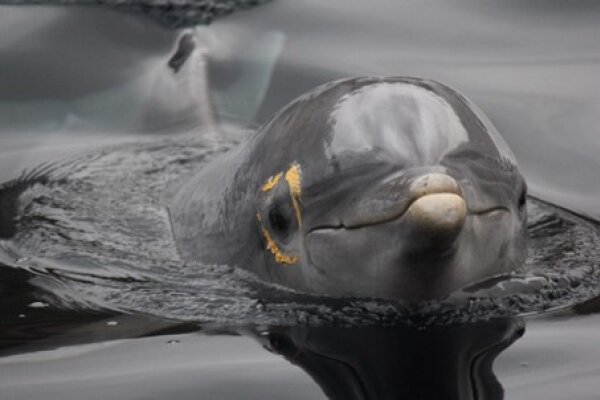2023-03-30

Mirror-guided self-recognition is seen as a cognitive hallmark that possibly indicates knowledge about oneself. Only a few species have up to now passed a standard mark-and-mirror test in which animals attempt to touch a mark that can only be seen in the mirror. Mirror self-recognition has also been claimed for bottlenose dolphins but this initial work is highly contested. The problem is: “How do test an animal that cannot touch the mark because it has no arms?” To solve this problem, experts of dolphin behavior in St. Andrews, Nuremberg, and Bochum invented a new procedure in which they marked the areas around both eyes of the animals at the same time, one with visible and the other with transparent dye to control for haptic cues. This allowed the animal to see the mark easily and the scientists to investigate what side the animal looked at when being confronted with a mirror. They found that the animals actively chose to inspect their visibly marked side while they did not show an increased interest in a marked conspecific in the pool. These results make it likely that dolphins can differentiate between self and others.

Mirror-guided self-recognition is seen as a cognitive hallmark that possibly indicates knowledge about oneself. Only a few species have up to now passed a standard mark-and-mirror test in which animals attempt to touch a mark that can only be seen in the mirror. Mirror self-recognition has also been claimed for bottlenose dolphins but this initial work is highly contested. The problem is: “How do test an animal that cannot touch the mark because it has no arms?” To solve this problem, experts of dolphin behavior in St. Andrews, Nuremberg, and Bochum invented a new procedure in which they marked the areas around both eyes of the animals at the same time, one with visible and the other with transparent dye to control for haptic cues. This allowed the animal to see the mark easily and the scientists to investigate what side the animal looked at when being confronted with a mirror. They found that the animals actively chose to inspect their visibly marked side while they did not show an increased interest in a marked conspecific in the pool. These results make it likely that dolphins can differentiate between self and others.